Important Derivations: Waves | Physics for SSS 3 PDF Download
Step-By-Step Derivation of Doppler Effect
In order to derive the Doppler effect, there are two situations that needs to considered, and they are:
Moving Source and Stationary Observer Where the Wave Travels with the Source

Where,
c: wave velocity
λs: wavelength of the source
T: time taken by the wave
Where,
vs: velocity with which source is moving towards a stationary observer
d: distance covered by the source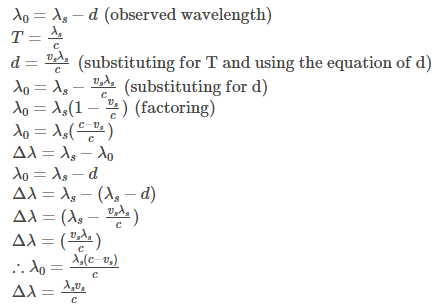
Moving Observer and a Stationary Source

Where,
f0: observed frequency
v0: observer velocity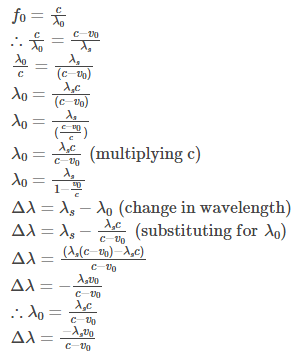
One Dimensional Wave Equation Derivation
The wave equation in classical physics is considered to be an important second-order linear partial differential equation to describe the waves. The wave equation arises in fields like fluid dynamics, electromagnetics, and acoustics. D’Alembert discovered the one-dimensional wave equation in 1746, after ten years Euler discovered the three-dimensional wave equation.
One Dimensional Wave Equation Derivation
Consider the relation between Newton’s law that is applied to the volume ΔV in the direction x:
Where,
F: force acting on the element with volume ΔV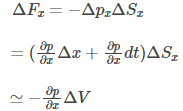

(as dt is small, it is not considered and ΔSx is in x direction so ΔyΔz and from Newton Law.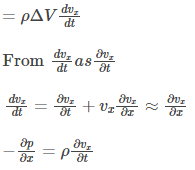
Above equation is known as the equation of motion.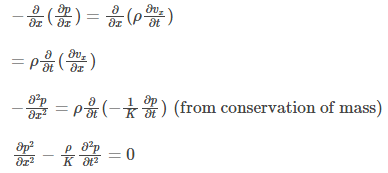
Where,
K: bulk modulus
Rewriting the above equation:
Where,
K: bulk modulus
Rewriting the above equation:
Where,
c: velocity of sound given as
Thus, above is the one-dimensional wave equation derivation.
|
57 videos|199 docs|65 tests
|

|
Explore Courses for SSS 3 exam
|

|
















